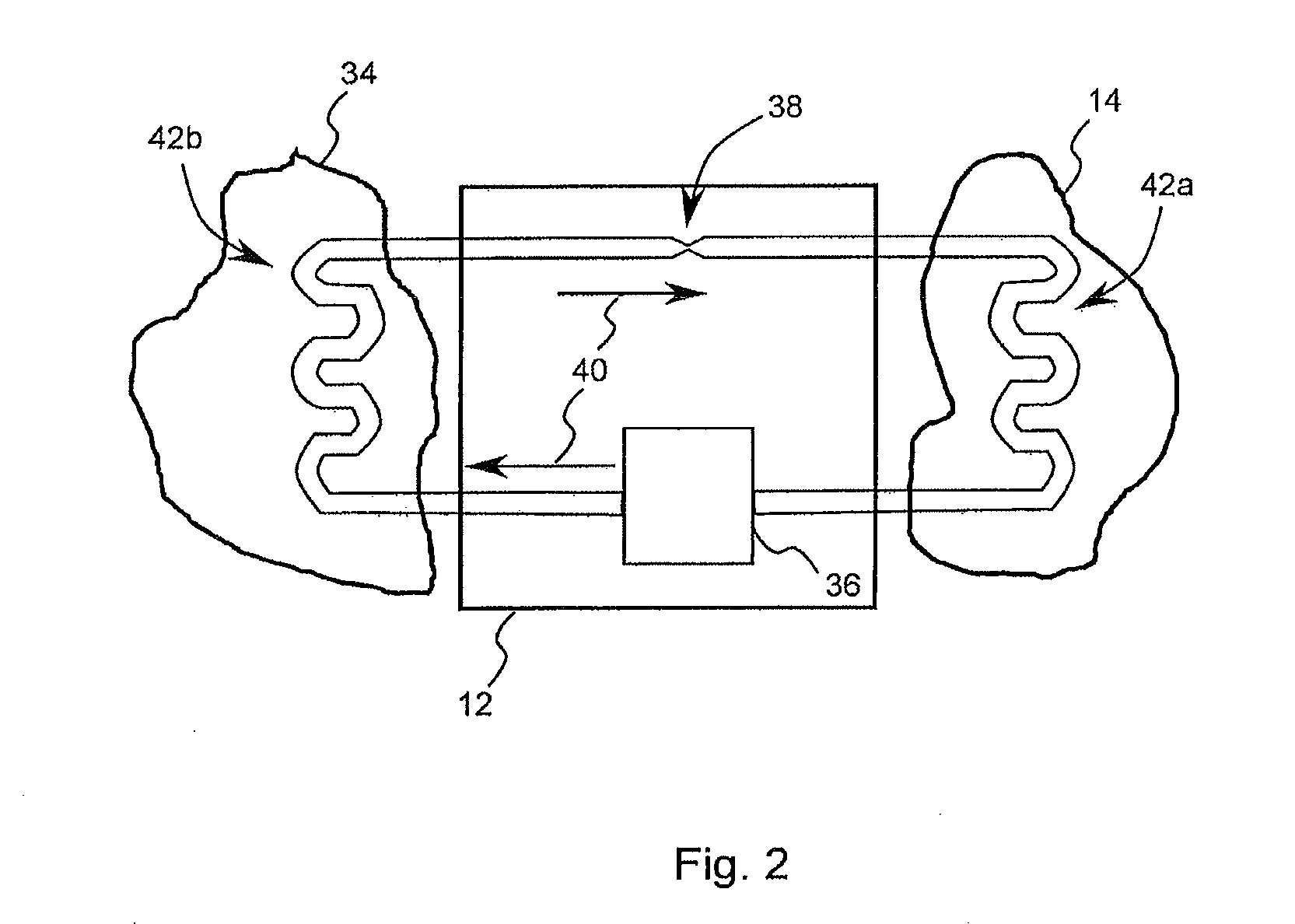Dialysis device and method for operating a dialysis device
a dialysis unit and dialysis fluid technology, applied in the direction of membranes, other medical devices, separation processes, etc., can solve the problems of large quantity of dialysis fluid consuming a considerable amount of additional energy, production and consumption rendering a dialysis treatment extremely costly, etc., to achieve the effect of increasing the efficiency of the dialysis uni
- Summary
- Abstract
- Description
- Claims
- Application Information
AI Technical Summary
Benefits of technology
Problems solved by technology
Method used
Image
Examples
Embodiment Construction
[0031]FIG. 1 illustrates an embodiment of a dialysis unit 2 having an inlet 4 so as to guide a dialysis fluid in a direction of flow 6 to a dialyser membrane 8. The dialysis unit 2 further comprises an outlet 10 for discharging a dialysate from the dialyser membrane 8. A heat pump 12 designed to exchange thermal energy between a heat reservoir 14 and the dialysis fluid in the inlet 4 is coupled to the inlet 4.
[0032]By the outlet 10 in the present case all devices or lines, are understood in which the dialysate can be guided or transported in the direction of flow 6 shown in FIG. 1 after the process of dialysis inside the dialyser 2 itself. Equally, by the inlet 4 of the dialysis unit 2 any device or line inside the dialysis unit 2 is understood which is or can be used to guide dialysis fluid or components of a dialysis fluid to the dialyser membrane 8. Consequently, by the inlet 4 especially also a tubing system or one or more devices guiding or processing the dialysis fluid are to ...
PUM
| Property | Measurement | Unit |
|---|---|---|
| volume | aaaaa | aaaaa |
| temperature | aaaaa | aaaaa |
| temperature | aaaaa | aaaaa |
Abstract
Description
Claims
Application Information
 Login to View More
Login to View More - R&D
- Intellectual Property
- Life Sciences
- Materials
- Tech Scout
- Unparalleled Data Quality
- Higher Quality Content
- 60% Fewer Hallucinations
Browse by: Latest US Patents, China's latest patents, Technical Efficacy Thesaurus, Application Domain, Technology Topic, Popular Technical Reports.
© 2025 PatSnap. All rights reserved.Legal|Privacy policy|Modern Slavery Act Transparency Statement|Sitemap|About US| Contact US: help@patsnap.com



